
|
Olympus E-M1 Mk.II Imaging Image detail and noise at various ISO settings |

|
My other articles related to the |
|
|
Here are two series of image samples, each shot over the full ISO range (at full-EV intervals), which should help us in understanding the behavior of this camera's imaging engine regarding the noise/detail combination.
Similar samples comparing E-M1 Mark I and Mark II, but limited to the two top ISO settings, can be found in Series 1: The Trinidad Dollar This is the first sample series I have run with Mark II. The subject is a Trinidad dollar bill, with two coins and a metal ruler thrown in for more tonal variety. The scene is quite busy, lots of detail, no gradual transitions or out-of-focus areas. The diffused light comes from a patio door, facing away from the Sun, early afternoon. The lens used was the MZD ED 12-100mm/4.0 IS Pro, at 80 mm. (Just recently released, it seems on its way, dare I say, to achieving a legendary status.) | ||
|
The tripod-mounted camera was pointing down, with IS disabled. Body shutter release with a self-timer.
Auto exposure: Aperture Priority at F/8.0, pattern (ESP) metering, no exposure compensation. Image processing: the Natural mode without any adjustments; White Balance at the Open Shade preset. Noise Filtering at Normal; no static Noise Reduction. JPEGs saved with 1:2.7 compression (SH Quality), at full nominal pixel size. Two frames were shot at each ISO, and the better one picked, based on sharpness and contrast. This was not easy, as both were always very hard to tell apart, virtually identical. Each sample links to the corresponding full-size (20 MP) file. |

Full frame, reduced and re-sharpened (ISO 200).
| |
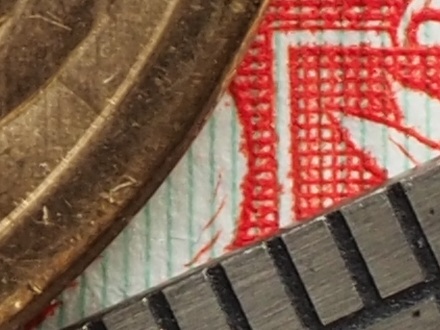
ISO 200 |
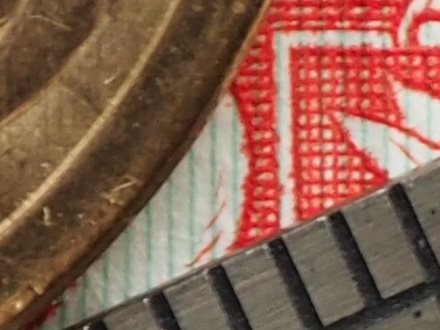
ISO 400 | |
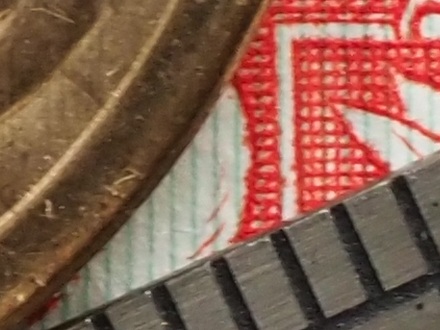
ISO 800 |
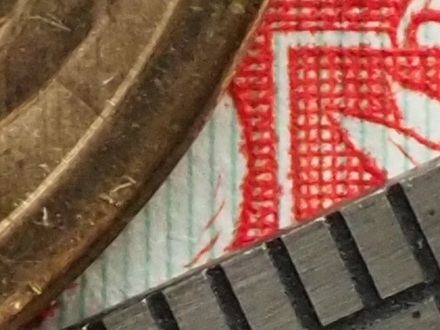
ISO 1600 | |
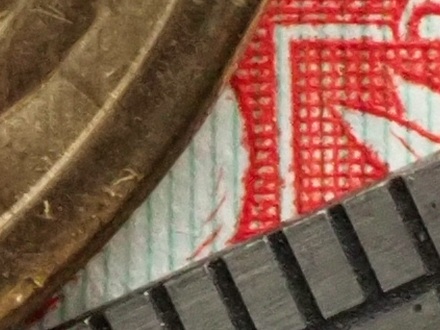
ISO 3200 |
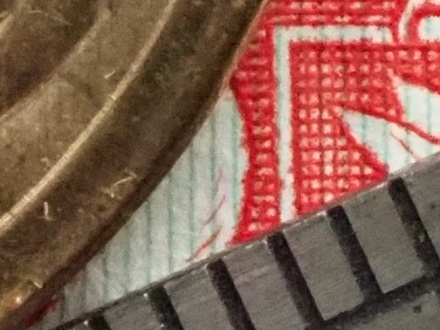
ISO 6400 | |
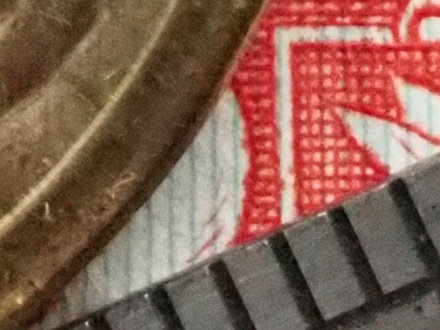
ISO 12800 |
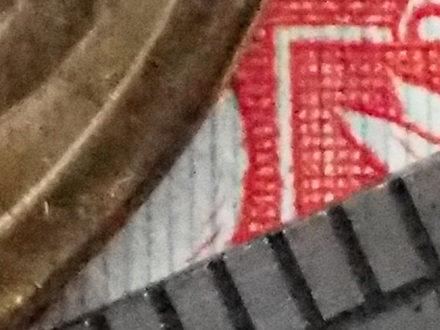
ISO 25600 | |
|
The first thing we can see here is that color and tonality hold steady all the way from ISO 200 to 25600. The contrast seems to drop a bit at the highest ISO setting, but just a bit (with the darkest areas going up). Secondly, the resolution (or sharpness). Obviously, noise filtering affects this, so the filtered image is re-sharpened. We have to remember that sharpening does not create image detail, but it may be quite efficient in creating its illusion, which often may be enough for a pleasing effect. Sharpening artifacts are a common pitfall of this process. The camera does a very good job here; the sample is packing lots of detail. Remember that these are 1:1 fragments from 20-megapixel images; the whole frame, shown in the same scale, would have to be 2.7 times wider than your HD screen! Actually, my impression is that most visible drops in both contrast and detail (perhaps also tonality) occur in two places: at ISO 400 and 25,600. Yes, I have seen lab measurements showing a more gradual deterioration, but this is what I subjectively see, and my other samples show a similar pattern. Holding this information from you would be just not right. The box, as it stands on my coffee table, was shot under warm fluorescent lamps in large, diffusive paper shades. A nearby white wall further softened the light. This is a very different scene than the first one. Much of it is out of focus, with blurred transitions from a few highlights to deep shadows; not much detail but an opportunity to see the noise (amplitude and pattern) in different areas. For this series I used a different lens, this time a prime, wide open to minimize the depth of field. | ||
|
Lens: MZD 75 mm F/1.8 ED
Auto exposure: Aperture Priority at F/1.8, pattern (ESP) metering, no exposure compensation. The Natural Picture Mode with no adjustments to factory defaults. JPEG compression of 1:2.7. I didn't even have to touch the camera during the whole session (shooting samples for different apertures) to change the settings or trip the shutter. This was done remotely with the Olympus Image Share application, running on my Android cell phone. Each 1:1 sample links to the original file. |
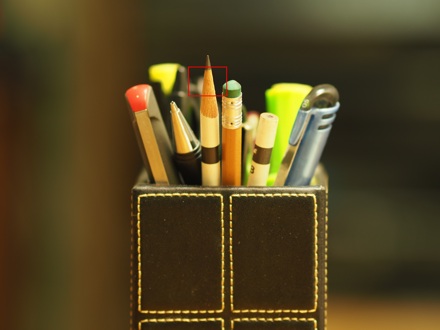
Full frame, reduced and re-sharpened (ISO 200).
| |
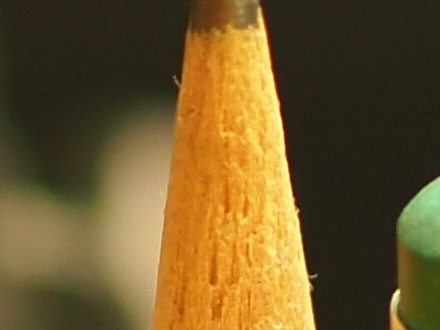
ISO 200 |
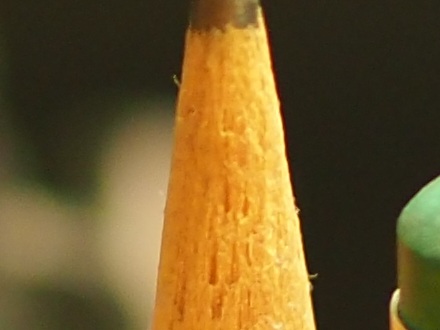
ISO 400 | |
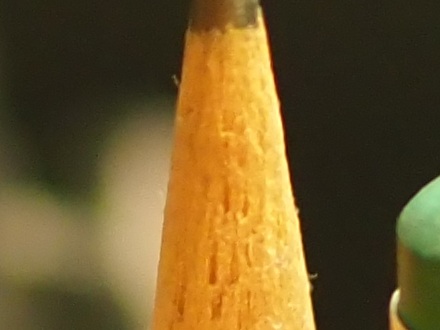
ISO 800 |
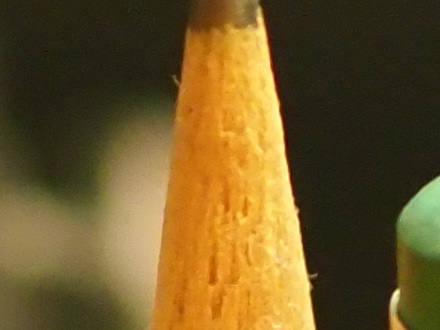
ISO 1600 | |
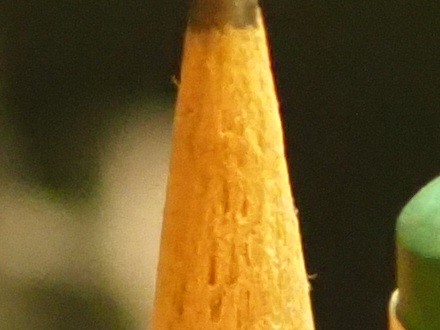
ISO 3200 |
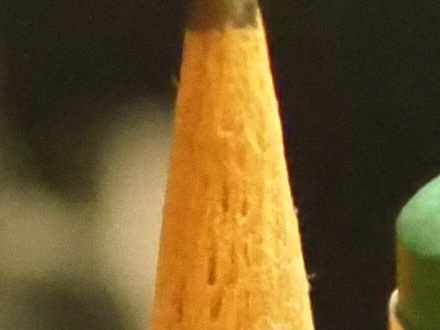
ISO 6400 | |
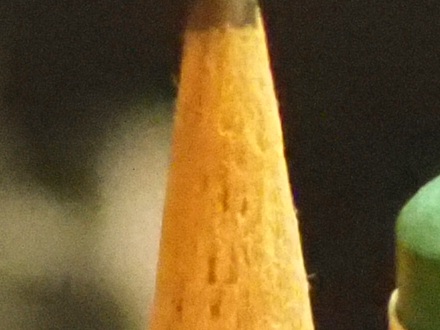
ISO 12800 |
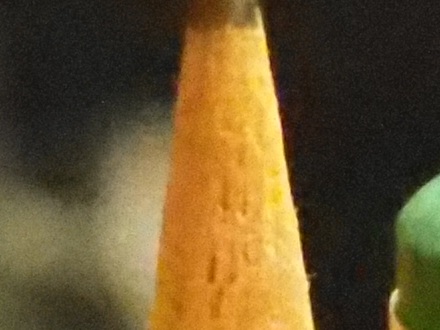
ISO 25600 | |
|
The focus was set at the two pencils in the center, but even they seem to be somewhat less sharp than the dollar note scene, especially at higher ISO settings. Actually, image detail starts degrading as soon as we leave the safety zone of ISO 200; still, the degradation is slow and gradual. I can live with it up to ISO 6400 or maybe even 12800. These images are not for viewing in full pixel size from a close distance, the way we view the samples. Now, the noise. A good place to watch in samples shown is the out-of-focus highlight to the left of the pencil. The tricky areas are pristine at ISO 200, almost so between ISO 400 and 1600. Settings of ISO 3200 and 6400 show nice, tight and even, noise pattern, which at ISO 25600 becomes not-so-nice and not-so-even, with ISO 12800 being an intermediate case, where noise clumping or clusterization are just starting to show. Even at the highest settings, however, the noise stays monochromatic; its chroma component seems to be nicely suppressed, and image tonality does not suffer. I'm getting an impression, that, in spite of identical settings in these sample series, image denoising and re-sharpening was done quite differently in both. Lots of fine detail in the first scene tends to mask noise effects. This calls for less aggressive noise filtering, which causes less loss of detail and contour sharpness. Most of the second scene is out of focus (to a varying degree); this exaggerates the noise, while there is not much detail to preserve in the image. The algorithm may decide to use a more aggressive filtering. The existing detail falls victim to it. Most probably this is just an impression caused by subjective differences in my perception of two so strongly different subjects. When you try too hard, you start seeing things. Somewhat surprisingly, samples of the same scenes shot on the original E-M1 clearly show more noise, but also some more detail. (The effect is stronger in the Pencil Box scene, too.) I suspect Olympus engineers decided to trade one for the other when working on the new camera; I just hope they did some serious soul-searching at that. Remember that we are really pixel-peeping here, see the note above about the image size. I wouldn't be afraid to use ISO up to 12,800 for all purposes, resorting to ISO 25,600 when I just have to have a picture. Olympus is more conservative in their judgement. The Auto-ISO feature in Mark II has the top limit of ISO 6400 (Item 5.E1.4.1 in my Cheat Sheet). Interestingly, in the original E-M1 it can be set all the way to ISO 25,600! | ||
|
|

|
My other articles related to the |
|
This page is not sponsored or endorsed by Olympus (or anyone else) and presents solely the views of the author.
All brand names and trademarks are a property of some fat guy with a cigar and a bunch of lawyers. |
| Home: wrotniak.net | Search this site | Change font size |
| Posted 2017/02/17; last updated 2017/10/30 | Copyright © 2017 by J. Andrzej Wrotniak |